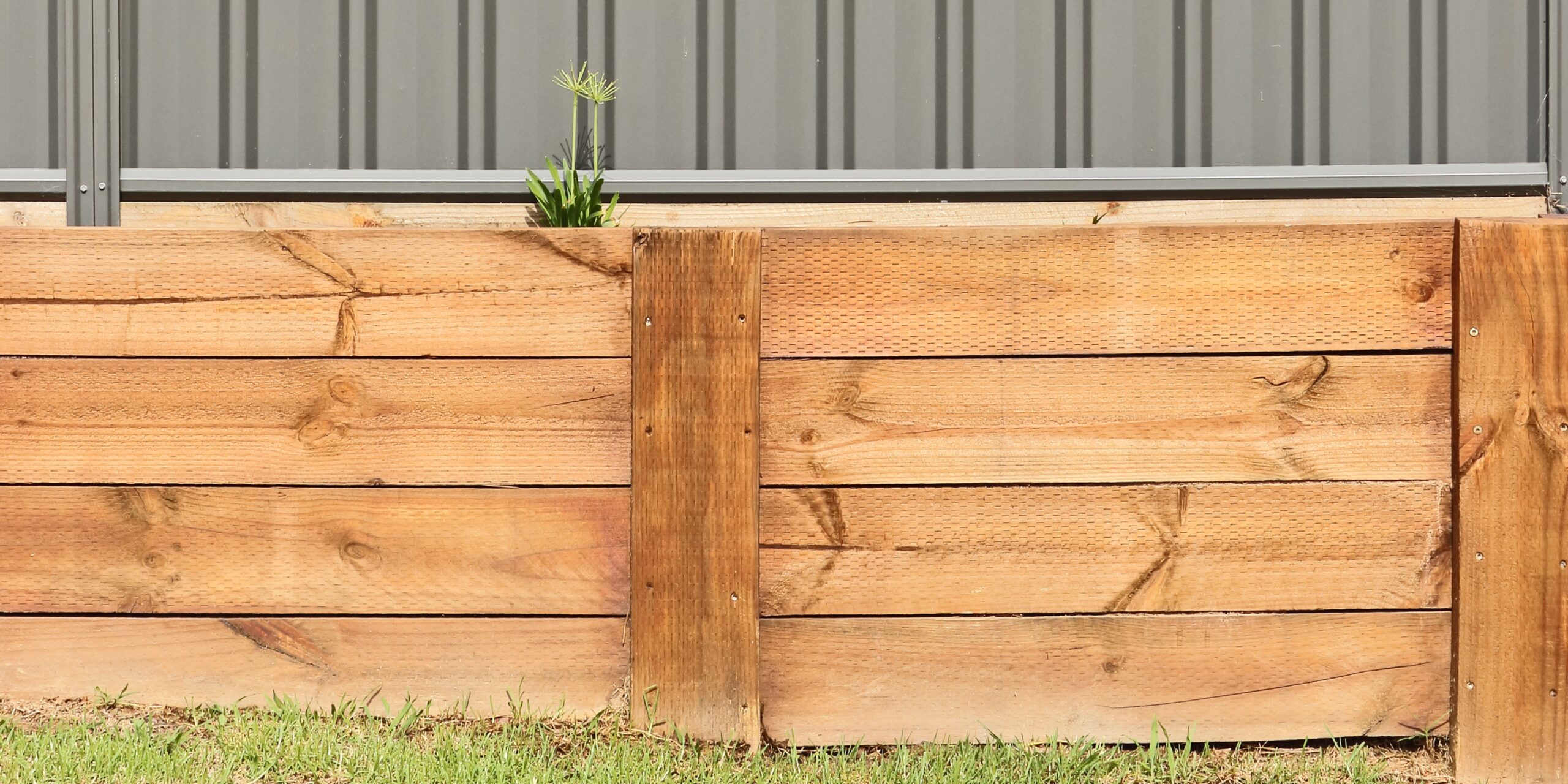What is Pressure Treated Wood?

Benefits of Pressure Treated Wood Retaining Walls
One of the primary advantages of using pressure-treated wood for retaining walls is its durability. The treatment process significantly extends the wood’s lifespan, making it resistant to moisture, insects, and fungal decay. This means your retaining wall will remain strong and functional for many years, even in harsh weather conditions.
Aesthetic Appeal
Pressure-treated wood offers a natural, rustic look that blends seamlessly with outdoor environments. Its warm, earthy tones can complement various landscaping styles, from traditional to modern. Additionally, pressure-treated wood can be stained or painted to match your specific design preferences, providing versatility in achieving the desired aesthetic for your property.
Cost-Effectiveness
Compared to other retaining wall materials such as stone or concrete, pressure-treated wood is generally more affordable. It provides an excellent balance between cost and performance, making it an attractive option for homeowners looking to enhance their landscapes without breaking the bank.
Ease of Installation
Pressure-treated wood retaining walls are relatively easy to install, especially when compared to masonry or concrete alternatives. This can result in faster project completion and lower labor costs. For those with DIY skills, building a pressure-treated wood retaining wall can be a manageable and rewarding project.
Applications of Pressure Treated Wood Retaining Walls
Erosion Control
Retaining walls are often used to manage soil erosion on sloped properties. By holding back soil and preventing it from washing away, pressure-treated wood retaining walls can help maintain the integrity of your landscape.
Garden Terracing
Creating multiple levels in your garden can add visual interest and make better use of sloped terrain. Pressure-treated wood retaining walls are ideal for building terraces, providing both functionality and aesthetic appeal.
Property Boundaries
Retaining walls can be used to define property boundaries and create distinct areas within your landscape. Pressure-treated wood walls can serve as attractive and functional dividers between garden beds, patios, and other outdoor spaces.
Raised Planters
Pressure-treated wood retaining walls can also be used to construct raised planters, offering a practical and visually appealing solution for growing flowers, herbs, and vegetables.
Maintenance Tips for Pressure Treated Wood Retaining Walls
Regular Inspections: Periodically check your retaining wall for signs of damage, such as cracks, splits, or rot. Address any issues promptly to prevent further deterioration.
Cleaning: Keep your retaining wall clean by removing dirt, debris, and mildew. A mild detergent and water solution can be used for this purpose. Avoid using harsh chemicals that can damage the wood.
Sealing and Staining: Apply a water-resistant sealant or stain to your pressure-treated wood retaining wall every few years. This will help protect the wood from moisture and UV damage, preserving its appearance and integrity.
Proper Drainage: Ensure that your retaining wall has adequate drainage to prevent water buildup behind the wall, which can cause damage over time. This may involve installing drainage pipes or gravel backfill to facilitate water movement.


